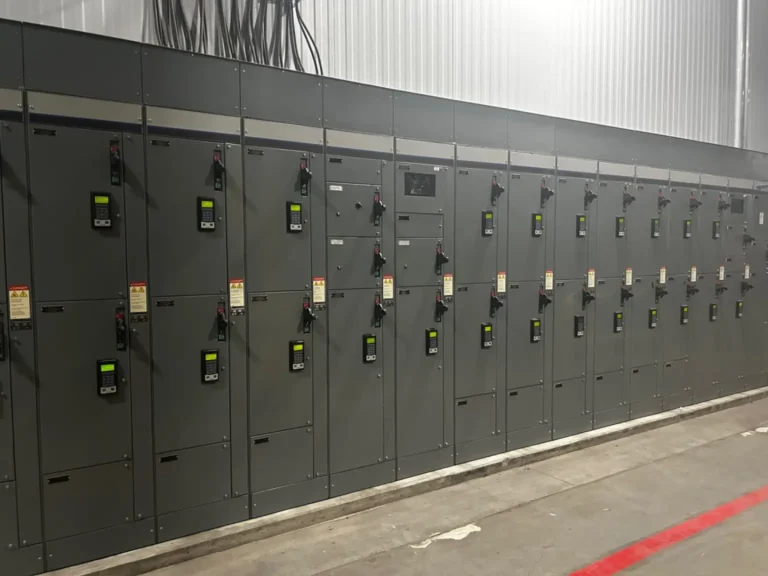Automation system integration is transforming how industries operate by connecting disparate machines, software, and processes into one seamless, efficient system. In a world driven by data, speed, and precision, businesses across manufacturing, energy, logistics, and more are turning to system integration to streamline operations, reduce errors, and improve productivity.
From reducing manual tasks to enhancing real-time decision-making, automation system integration is no longer a luxury—it’s a necessity. Companies that fail to modernize often fall behind in a competitive market. That’s where expert automation integrators like Xtreme Automation LLC step in, offering tailored solutions to align your processes, technologies, and goals.
What Is Automation System Integration?
Automation system integration is the process of combining various hardware and software components—such as PLCs (Programmable Logic Controllers), HMIs (Human-Machine Interfaces), sensors, control panels, SCADA systems, and enterprise-level software—into one interconnected, functional system.
Rather than operating in silos, these integrated components communicate and work together to automate tasks, collect and analyze data, and optimize workflows.
With automation system integration, businesses can:
-
Improve operational efficiency
-
Minimize downtime
-
Enable predictive maintenance
-
Enhance safety and compliance
-
Reduce costs and waste
Why Is Automation System Integration Important?
Disconnected systems often lead to inefficiencies, miscommunication, and errors. In contrast, an integrated system provides real-time visibility into all processes, allowing for better control, faster troubleshooting, and smarter decision-making.
For example:
-
In manufacturing, integrated systems can automate production lines from raw materials to packaging.
-
In energy, they can monitor grid performance and optimize distribution.
-
In logistics, they streamline warehouse operations and fleet management.
Automation integration also allows businesses to scale operations without proportionally increasing costs, making it ideal for companies preparing for growth.
Key Components of an Integrated Automation System
-
Control Panels – Central hubs that contain the electrical components and wiring necessary to run and control machinery.
-
PLC & HMI Programming – The “brains” of automation systems, allowing users to set logic-based functions and interact with machines.
-
SCADA Systems – Supervisory control and data acquisition platforms that provide system-wide visibility and control.
-
IoT Devices and Sensors – Devices that monitor environmental conditions, machine health, and more, feeding data back into the system.
-
Industrial Networks – Ethernet, wireless, or fieldbus networks that connect devices and systems in real time.
Bringing all these components together requires a skilled integration partner with deep industry knowledge and technical experience.
Why Choose Xtreme Automation LLC for Integration Services?
When it comes to effective automation system integration, experience and customization are key. Xtreme Automation LLC specializes in delivering turnkey automation solutions that are tailored to your specific operational needs.
Their services include:
-
Full system design and engineering
-
Custom control panel fabrication
-
PLC and HMI programming
-
SCADA and MES integration
-
System upgrades and retrofits
-
Ongoing support and maintenance
With a focus on quality, safety, and innovation, Xtreme Automation LLC ensures your system works efficiently and reliably from day one.
Industries That Benefit from Automation Integration
Automation system integration offers value across a wide range of industries, such as:
-
Manufacturing: Optimize production lines and reduce human error.
-
Water & Wastewater Treatment: Monitor pumps, tanks, and flow rates with real-time alerts.
-
Food & Beverage: Ensure product consistency and meet regulatory requirements.
-
Oil & Gas: Improve safety and remote monitoring of pipeline systems.
-
Pharmaceuticals: Maintain strict control over processes and documentation.
Each of these industries has unique challenges that automation system integration can help solve—especially with the right integration partner.
Benefits of Integrated Automation Systems
-
Real-Time Monitoring: Know what’s happening on the floor at any given moment.
-
Increased Uptime: Preventative alerts and automated responses reduce downtime.
-
Data-Driven Decisions: Collect and analyze data for continuous improvement.
-
Remote Access and Control: Manage your system from anywhere with secure connectivity.
-
Regulatory Compliance: Ensure systems meet safety and industry standards.
The Future of Automation System Integration
As Industry 4.0 technologies continue to evolve, so too does the scope of automation system integration. Emerging trends include:
-
AI and Machine Learning: For predictive maintenance and process optimization.
-
Cloud-Based Platforms: Allowing remote access and advanced analytics.
-
Cybersecurity Integration: Protecting sensitive data and critical infrastructure.
-
Modular Systems: Enabling scalable and flexible automation setups.
Businesses that adopt these innovations are positioning themselves for long-term success in a highly competitive landscape.
Conclusion
Automation system integration is more than just a technical upgrade—it’s a strategic investment in the future of your business. With the right integration strategy, you can unlock greater productivity, efficiency, and scalability.
If you’re searching for a partner who understands both the technology and the industry, Xtreme Automation LLC offers comprehensive solutions designed to meet your exact needs. From concept to completion, their expert team ensures your automation systems perform reliably, efficiently, and intelligently.
Don’t let outdated systems hold your business back. Embrace the power of automation system integration today—and take control of tomorrow.



